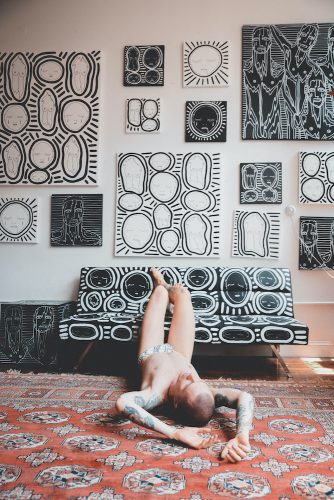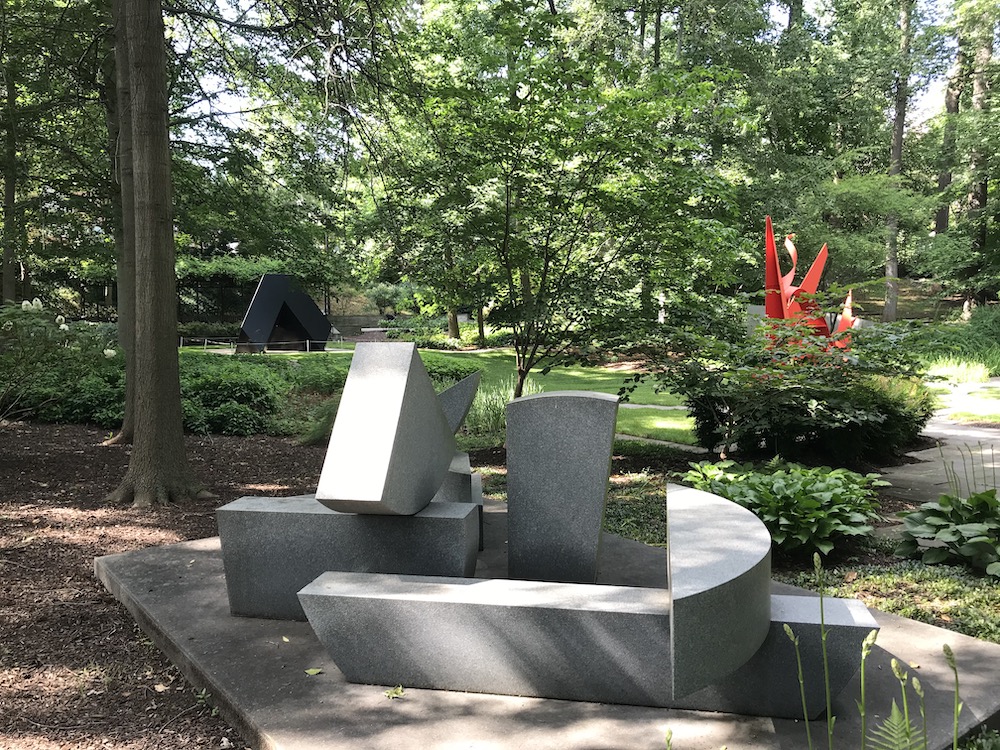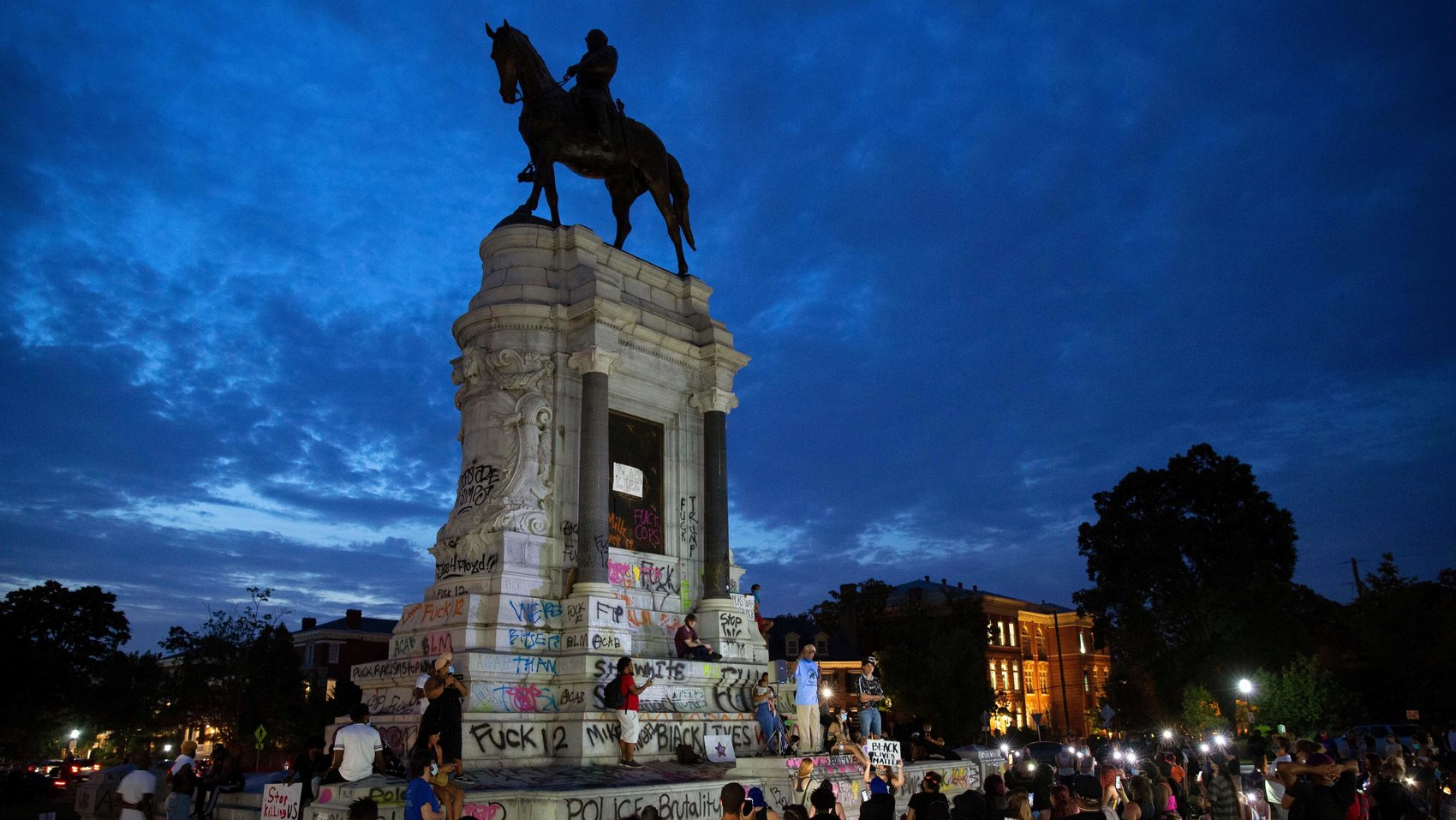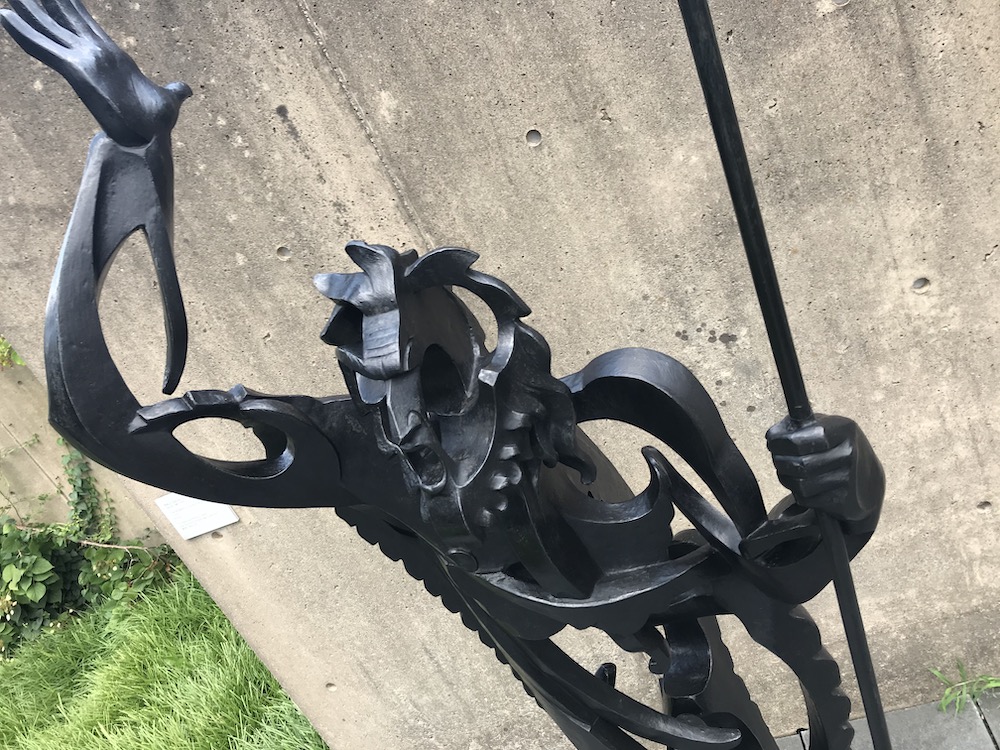Walking through the BMA’s recently reopened sculpture gardens is a surprisingly complicated experience. It offers a welcome chance to return to more than thirty works, their roster and positions long unchanged, in a bucolic setting: an appealing prospect in the middle of a pandemic, and one that may spark nostalgia in many museumgoers. Ultimately, though, when considered closely the works feel irredeemably remote, or even dully irrelevant. After visiting the gardens twice last week, I was reminded of the experience of seeing my modest childhood home as an adult. It’s hard to reconcile my rich memories of the place with what now reads as a limited and parochial landscape. What once seemed inevitable and full of excitement now seems finite.
Let’s be clear, though: the facilities are still inviting. The generous fountain in the Janet and Alan Wurtzburger Sculpture Garden (which primarily features figural, mid-century works) burbles amicably. Dappled sun illuminates Jacob Epstein’s The Visitation, and the neatly cropped grass surrounding Rodin’s magisterial Balzac contrasts with the figure’s priapic, proprietary swells. In the larger Ryda and Robert H. Levi Sculpture Garden (which includes a number of larger works from the 1970s and 1980s), irregular paths, varied elevations, and partial sightlines yield an engaging series of anticipatory views and momentary revelations.
Certainly, too, some of the works reward. The obvious urgency of Pablo Gargallo’s bronze prophet, from 1933, is exhilarating: Constructed out of sinewy arcs of cast bronze, the haranguing figure embodies the intensity of a shrill oracle. Not far away, José Ruiz de Rivera’s Construction 140 quietly whirs and slowly rotates on its plinth, fostering a series of evolving reflections of the tree canopy and the sky above. Below that, the fall of light on the varied planes of Alexander Calder’s 100 Yard Dash results in a remarkable series of shadows and gradations that recall the swells of a Baroque church.










